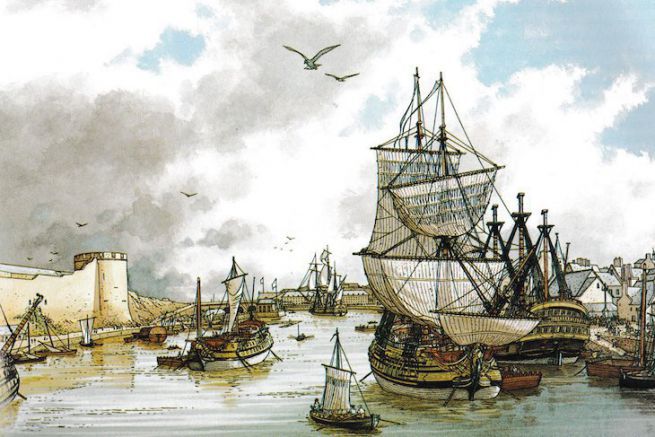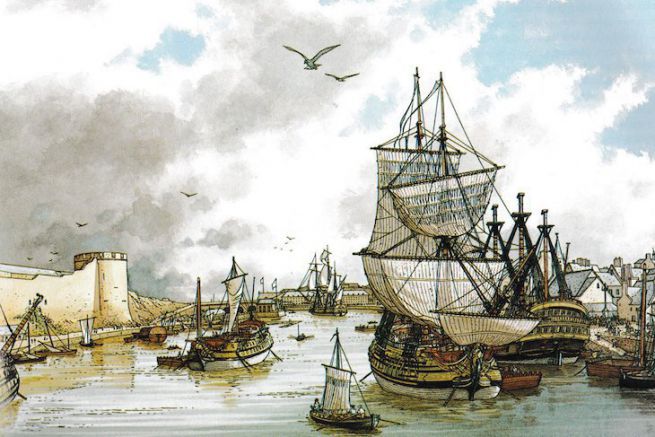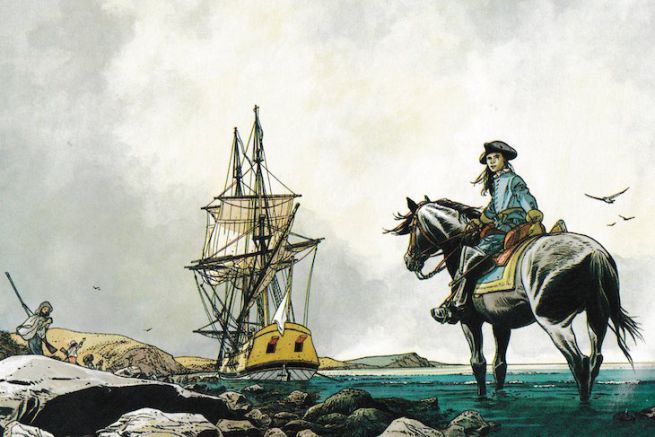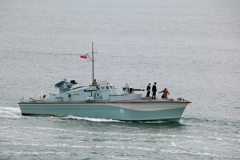Rhythm and synchronize the sailors' work
From the 17th to the 19th century, seafarers' songs abounded on ships that travelled the world for many months or even years. From captain to mate, everyone sings in chorus, at sea and in port.
Indeed, the sailor's song has several objectives. The first is to synchronize and set the pace for the crew's work and the second is to make them forget their conditions. Universal, it can be found in all countries with a maritime tradition until the end of the 19th century, and the development of motor boats. It was at the end of the 19th century that the most famous songs were written, and they are still relevant today.
The majority of sailors' songs are working songs - also called shanties in English - even if there are also relaxation songs. Whether for dancing, drinking or working, words and rhythms are constantly changing. Thus, a song to be chanted for work or relaxation, but with a very different rhythm, sustained in the first case and slower in the second case.
To make people forget their daily lives
Life is sea is long and difficult. At any given moment, sailors are exposed to death, cold, heat, fights, diseases... They sail the raging and sometimes calm oceans, with imprecise maps, subjected to harsh conditions, which can put their nerves to the test.
Promiscuity is at its peak for its men who share their bunks, watches and meals, while somewhere awaits them a family, a woman, a fiancée and sometimes children. Not to mention that some of them are forced to board.
These songs and complaints then punctuate their lives, invented according to the experiences of the sea and port. They sing them at sea, but also on land, in taverns, after emptying their pockets to get drinks and women.
If progress has developed them - boats have increased in size - it has also contributed to their decline with the mechanization of boats in the first half of the 20th century.
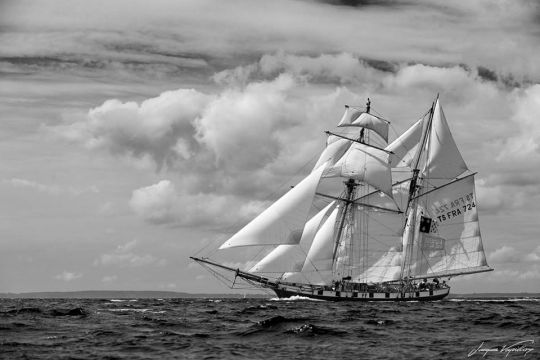
The origin
Sailors' songs have always existed throughout the world. Since antiquity, sailors' songs have been used to mark the work of the ports, even if the first testimonies date back to the 15th century and refer to very basic songs.
The theme of the songs
We must not forget that sailors do not have any musical training. They use basic structures with a sequence of simple verses interspersed with choruses or a repeated sentence. The melody is easy to memorize and the lyrics are often related to the professional environment.
These songs are rarely vulgar, but speak of a naughty, humorous or grotesque scene. We find the theme of work, food - which is not famous on board - or women.
The sailors mention the lack of the bride, left in port, of a wife watching for her husband's return, of a mother, a sailor's widow. These women who run the household while they run the helm. They praise their courage, their patience, they never complain.
In the complaints, they evoke the discipline of the ship, the hardness of their superior, the harsh sea conditions, but also the absence, the camaraderie, or the melancholy that inhabits the seafarers. The themes are the same everywhere: the loss of a man at sea, the violence of the elements, the discomfort..
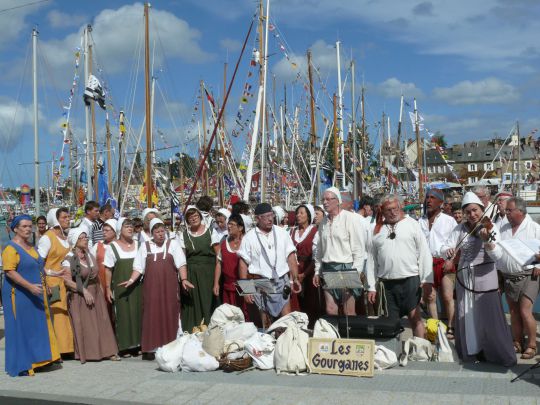
Festival du Chant de Marin - Paimpol
The types of songs
As we have seen before, there are two main types of songs:
- Working songs with lively rhythms for manoeuvres
- Relaxation songs, sung on land or in moments of calm and which tell of the experiences on board. They can be accompanied by musical instruments and are often improvised around a leader.
There is also the charivari, which was a grivoise and mocking song invented by the crew to talk about an officer. According to tradition, the verses had to rhyme in "i".
Musical instruments
In France, we use the accordion, the violin, but also the biniou or the bombard in Brittany. The English use violins and concerti instead, while the Germans and Italians organize real orchestras.
Let us not forget that the voice is the essential element of these stories and music is a support, especially used in relaxation songs.

Always up to date
Despite its disappearance in the professional world, the sailor's song is still relevant today. It was given a second wind in the 1960s and 1970s. New and more contemporary songs have been added to the traditional repertoire.
If they no longer have the vocation to set the pace of work, they are part of the maritime tradition and are a sign of recognition. There are also many sea song festivals throughout France.
